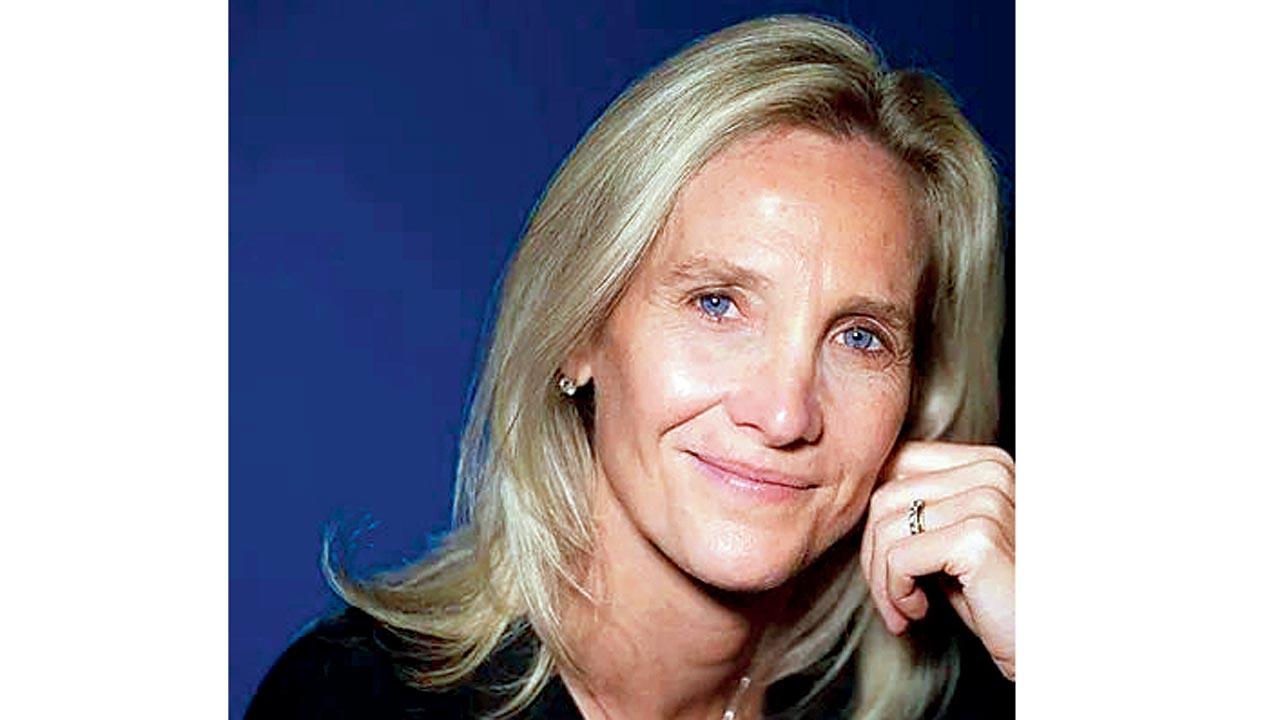We learn about the enigmatic last prince of Indore, Yeshwant Rao Holkar II, through a new well-researched and detailed book by art historian, Géraldine Lenain

Yeshwant Rao Holkar II photographed by Bassano Studios c 1931; (right) a portrait of Maharani Sanyogita Devi by Bernard Boutet de Monvel. Pics Courtesy/Roli; Geraldine Lenain
Double culture is of great interest to me. I was born abroad; I lived my life in different countries. It’s a topic that’s important for me to understand people who lived in different cultures and their historical background. How do they react to political events? Do they change their identity?” This curiosity led the French art historian Géraldine Lenain into the world of Yeshwant Rao Holkar II, a prince from the Holkar dynasty of the Marathas, who carved a special place for himself, living a life between cultures of the East and the West. Lenain’s recent work, The Last Maharaja of Indore (Roli Books), translated into English by Sindhuja Veeraragavan, explores his journey. It begins with his formative years, which he spent trying to escape his later deposed father and preparing for a life distinguished by modernity. We learn about his wealth but also his style and taste in art as well as wardrobe, furnishings, and other possessions. The book then turns towards a dark corner of his life with the death of his sister and the subsequent death of his wife, Maharani Sanyogita Devi, two events that left him completely shattered.
 The royal couple on the set of The Plainsman with Gary Cooper and Cecil B DeMille (seated) in 1936
The royal couple on the set of The Plainsman with Gary Cooper and Cecil B DeMille (seated) in 1936
Lenain first chanced upon a portrait of the Maharaja by the 20th century French painter Bernard Boutet de Monvel at an auction in Paris over 25 years ago. “It intrigued me. I knew nothing about the man, but I wondered who he was. He looked Indian but wore Western clothes. I started reading about him to understand why the painting was done.” For 25 years, she kept tabs on the pieces in the art market that belonged to the Maharaja. “It was my personal interest until there was a big exhibition at the Musée des Arts Décoratifs, Paris, in September 2019,” she tells us. When she stepped out of the exhibition, she knew instantly who the subject of her next book was going to be. “I had no explanation about the before and the after of the Maharaja’s collecting years.” There was a lot written in the West about the 10 years of his life as a collector and patron of art, but nothing else. “I didn’t understand how he became this important collector and why he stopped collecting. I couldn’t find the answers to my questions anywhere.” During this time, she was headed to Delhi; she had plans to live in India for the next four years. As soon as she arrived, she dove into her book.
 The Maharaja’s 1935 Duesenberg, the most expensive car at the time
The Maharaja’s 1935 Duesenberg, the most expensive car at the time
The pandemic gave her time to write. Although the restrictions restrained her from travelling frequently, she found treasured documents in the national archives in India, London, and Berlin. The archives of the German architect Eckart Muthesius, who was called upon to build Manik Bagh, were particularly helpful. Manik Bagh was the palace in Indore, commissioned by the royal couple, who wanted to distance themselves from the pomp of their forebears and the colonial architecture prominent at the time. Their travels led them to encounters with several artists who helped shape their sensibilities. Among them was the journalist and writer Henri-Pierre Roché, whose free-spirited personality inspired the Maharaja.
 Geraldine Lenain
Geraldine Lenain
“The Maharaja was living for art and was very courageous at the time. He had to fight for so many things, and had a lot of weight on his shoulders, but he was happiest during this time. He had great ambitions for his state,” says Lenain. It was his modernity which frequently cost him his reputation with the people of his state too, who were hostile towards such thinking.
One of the most moving chapters in the book is the death of the Maharani, his closest companion. There was a lot of hearsay about the reason for her death. Some believed that the Maharaja poisoned her. “Prove me,” Lenain asserts. To her, nothing holds greater primacy than written evidence. It took her two years to find the death certificate of the Maharani. She straightened things through the certificate, which pointed towards a natural death. This period of loss was the most melancholic one in the Maharaja’s life. “The two got along very well,” she reveals. “They married so young [at the ages of 15 and nine] and were brought up together. After her death, we truly understand how important she was for him. They travelled together. He consulted her for decisions. The artistic period was really a couple adventure.”
In the book, she describes their European travels, their meetings with Monvel, whose style combined Art Deco and neoclassical influences, their experience of producing a film about a jewel thief with Roché, and their run-ins with the great patron Jacques Doucet, whose collections influenced them. “The Maharaja would share jewellery with his wife, [another sign of his resistance to norms]. When she died so suddenly, so young, his whole world collapsed. He couldn’t see how he was going to move forward without her,” she concludes, affixing to the subtitle, alongside the words ‘aesthete’ and ‘patron’, the phrase:
‘tragic prince’.
Cost Rs 495
Available At leading bookstores and e-stores
 Subscribe today by clicking the link and stay updated with the latest news!" Click here!
Subscribe today by clicking the link and stay updated with the latest news!" Click here!








